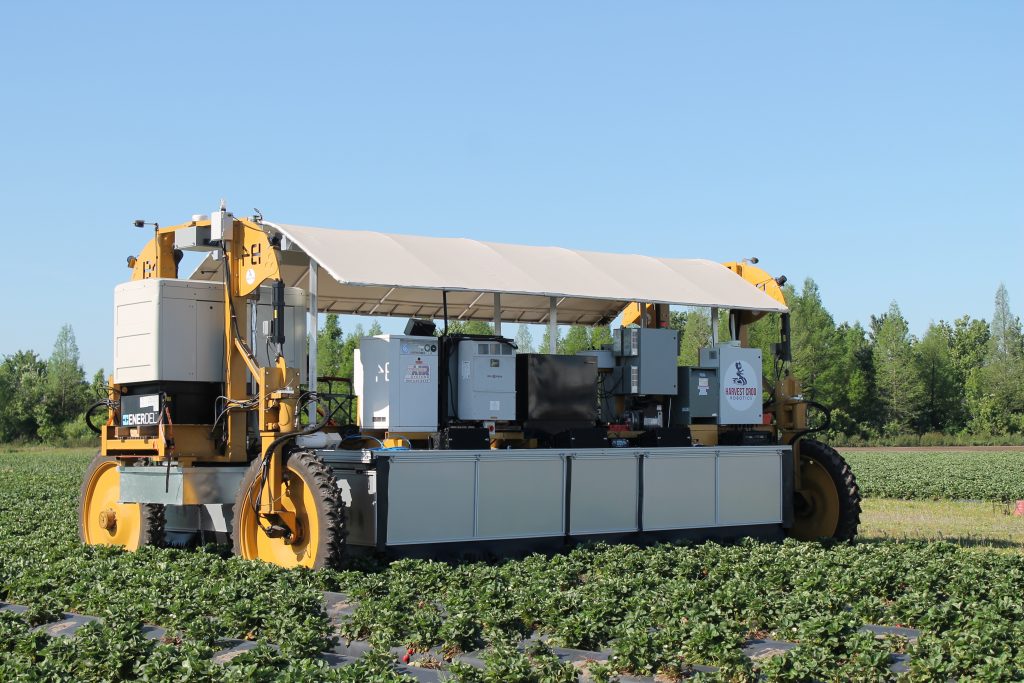The world of artificial intelligence, robots and big data is upon us, and agriculture will not be left out. Nobody knows this better than Vonnie Estes, vice president of technology at the Produce Marketing Association (PMA). Her job is to work with farmers nationwide to help them learn how to adopt such technologies. Estes also serves as a resource for producers wondering what technology is coming down the pipeline.
WHAT’S COMING?
Robotics seem to be the next big thing in agriculture. There are several companies in the market working tirelessly on robots that can perform certain duties on the farm, especially harvesting. However, Estes says these companies have their work cut out for them. “That’s really difficult because not all produce is ready at the same time, and it’s usually under a bunch of leaves,” she says.
Furthermore, the picking machines must be gentle on the produce. “You can’t grab or jerk a strawberry. You have to be really careful,” she explains.
Another technological advance to watch for is indoor farming. Growing outdoors can present several issues and unknowns; enter indoor farming. “A lot of people are saying, ‘Well, what if we take the issues of farming outdoors away and grow inside? Is that going to help?’” Estes explains.
While there are several other tools on their way to the market, Estes says robotic picking and indoor farming are the main ones for now.
FUNDING AND AFFORDABILTY
An issue that many technology companies face is funding. Since the produce industry includes a multitude of crops that have different needs, it can be difficult to find funding for a product that is crop specific. One example Estes cites is the mechanical strawberry harvester from Harvest CROO Robotics.
Harvest CROO’s mechanical strawberry harvester has taken the industry by storm. However, developing the machine is only one piece of the puzzle. Funding the machine is a whole other monster. Despite having nearly two-thirds of the strawberry industry on its cap table, Harvest CROO still needs more than that.
Estes worked with the company to help it figure out how best to move forward. One of the ideas that was considered is using the basic structure of the machine to harvest multiple crops instead of just one. “Then it might be easier to get some funding for it,” she says.
Harvest CROO is planning on using its machine as a service rather than a product. Often, producers look at tech products and see dollar signs. But knowing that these harvesters would be rented can ease the financial fear of not being able to afford such a luxury. Estes believes this is the way to go. “If you can capitalize the company in a way that you can have a fleet (of machines) to rent out, that would make sense,” she says.
Learn more about Harvest CROO’s mechanical strawberry picker in ‘Harvesting is just the beginning’.
A DIFFERENT WAY OF DOING THINGS
Estes strongly urges businesses to stay flexible amid all the new advances quickly approaching. The main thing business owners will see is the need for more staff. “The current generation and people in my generations didn’t grow up with technology,” she explains. “So, to expect that they’re going to make the decisions throughout their whole organization about where technology should be used and where it’s good and where it’s not … it’s like asking them to do brain surgery. It’s not what they’re trained to do.”
Estes says hiring someone with Microsoft or Google on their resume would be a smart move. Finding people who can understand the technology and figure out the best ways to adopt it makes all the difference. “Some business models will have to change, and the way we do business will have to change,” she says.
USEFUL RESOURCES
Estes warns that those who are unwilling to learn more and make changes may be bought out because they get behind. So, getting ahead of the wave of change is recommended. The PMA website (PMA.com/topics/technology) has many resources for growers. Estes also recommends keeping an eye on technology being introduced in other commodities because it may come to produce next.
Estes realizes that it can be difficult for growers to find information on technology and to vet what’s true and what’s not, but she can help. “That’s one of the reasons I took this job with PMA, because part of my job is to vet what’s real, what’s ready to be adopted and help make that translation from technology to producers,” she concludes.










